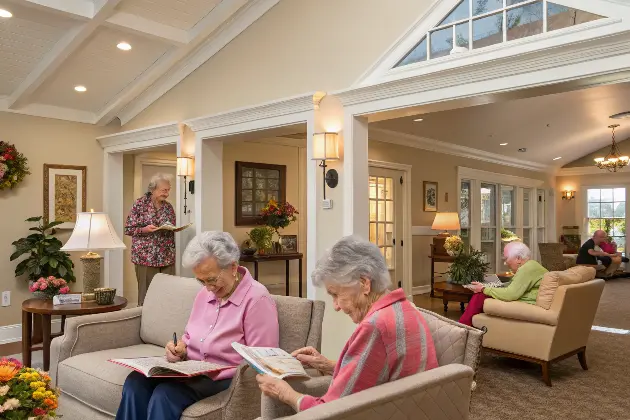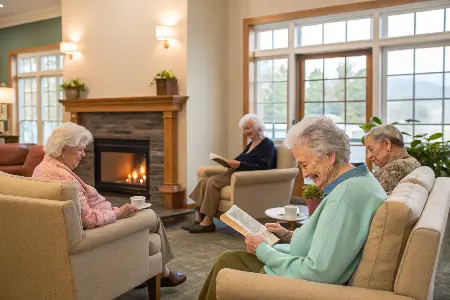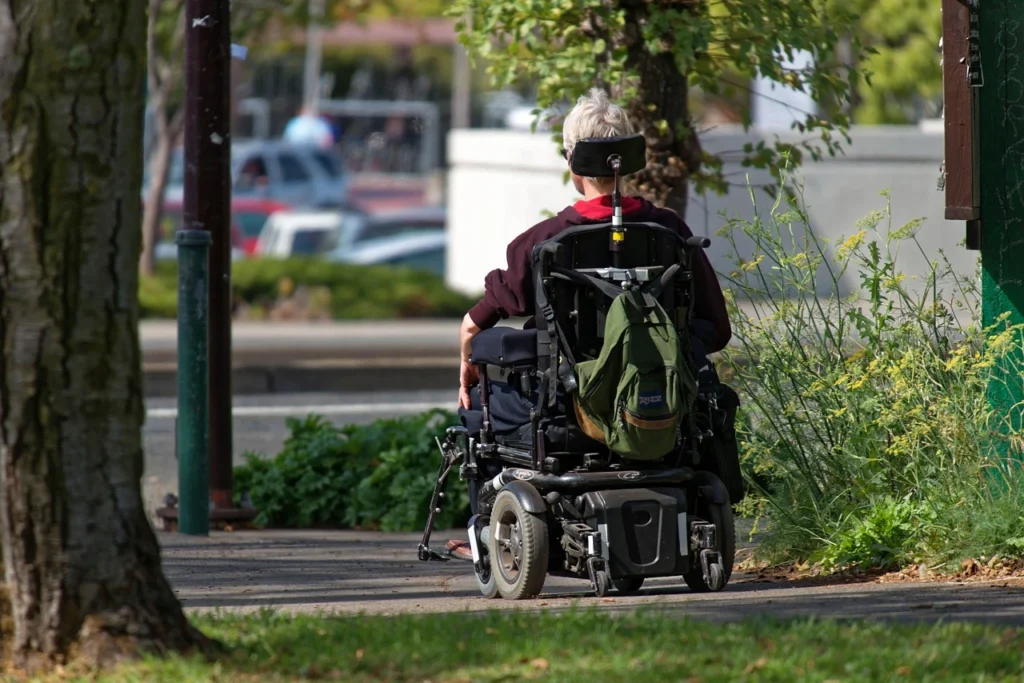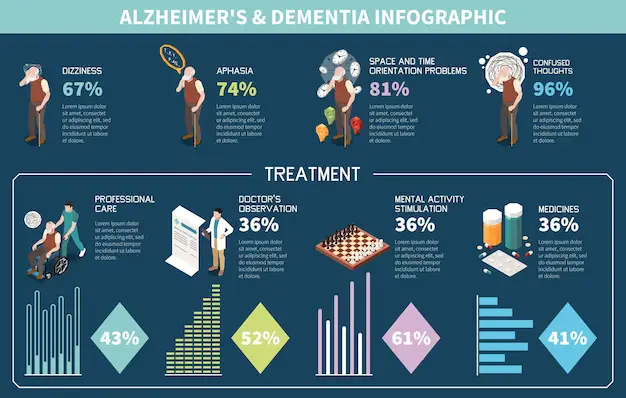Top 10 Senior Living Homes: Ultimate Guide

What are Senior Living Homes?
This post may contain affiliate links, meaning I may earn a commission if you make a purchase, at no extra cost to you. I only recommend products I trust. Thank you for your support.
Senior living homes are residential communities designed for older adults, offering housing, support services, social activities, and varying levels of care to meet seniors’ health and lifestyle needs.
They provide not only housing but also a range of support services and amenities aimed at promoting a comfortable, secure, and social lifestyle.
Below are some key points about senior living homes:
- Variety of Living Arrangements: They encompass different types of living situations, from independent living for those who want a maintenance-free environment to assisted living.
- Support Services: Most communities offer services like housekeeping, dining options, transportation, wellness programs, and sometimes even on-site healthcare services.
- Community and Social Engagement: Senior living homes typically emphasize social interaction and community engagement by organizing group activities, recreational programs, and communal events.
- Safety and Convenience: Designed with safety in mind, these communities often feature secure environments, emergency response systems, and facilities that are easily accessible.
In this article, we will explore the different types of senior living homes available, and the factors to consider when making a choice.
Additionally, we unveil a curated list of the top 10 senior living homes committed to providing older adults with a fulfilling and enriching life.
Types of Senior Living Homes
Below is an overview of the various types of senior living homes available today:
1. Independent Living Communities
Designed active seniors seeking a community-centric, worry-free lifestyle without the burden of home upkeep.
Key features of independent living communities include:
- Private apartments or cottages within a community setting.
- On-site amenities such as dining options, fitness centers, and social activities.
- No need for assistance with routine daily tasks, though help with maintenance, housekeeping, and transportation is usually provided.
2. Assisted Living Facilities
Assisted living facilities cater to seniors who wish to maintain their independence while receiving assistance with day-to-day tasks and enjoying a supportive community environment.
Key features of assisted living facilities include:
- Personalized care plans tailored to each resident’s needs.
- 24/7 staff availability and emergency call systems.
- Communal dining, social events, and recreational programs.
3. Memory Care Facilities
Memory care is a specialized type of senior living focused on the unique needs of individuals with Alzheimer’s disease or other forms of dementia.
Key features of memory care facilities include:
- Secure, structured environments to ensure resident safety.
- Specialized programs aimed at enhancing cognitive function and reducing agitation.
- Care teams trained specifically in memory care and dementia management.
4. Skilled Nursing Facilities (Nursing Homes)
Skilled nursing facilities, sometimes known as nursing homes, provide higher levels of medical care and support for seniors with significant health conditions or those recovering from surgery or illness.
Key features of nursing homes include:
- Around-the-clock nursing care and rehabilitation services.
- Medical monitoring and treatment administered by licensed professionals.
- Comprehensive care plans addressing complex health needs, often including physical, occupational, and speech therapy.
5. Continuing Care Retirement Communities (CCRCs)
CCRCs offer a continuum of care within one community, allowing residents to age in place as their care needs change over time.
Ideal for seniors who want the security of having all care options within one community, enabling them to remain in the same neighborhood regardless of changing health needs.
Key features of CCRCs include:
- Multiple levels of care available on-site, from independent living and assisted living to skilled nursing care.
- Seamless transitions between different tiers of care without the need to relocate.
- Emphasis on long-term planning, health management, and community engagement.
6. Residential Care Homes (Board and Care Homes)
Residential care homes are typically smaller-scale facilities, often housed in converted private homes or apartments, that provide basic care and support to seniors in a more intimate setting.
Key features of residential care homes include:
- A home-like environment with fewer residents for a more personalized setting.
- Assistance with daily activities, meals, and sometimes medication management.
- Emphasis on creating a family-like atmosphere and strong personal relationships among staff and residents.
Top 10 Senior Living Homes for a Life of Fulfillment
Each of these communities is crafted to meet varying needs, whether you seek a more active, independent lifestyle or require some level of support with daily activities.
It’s advisable to contact each community directly for the most accurate and up-to-date information about costs and services:
- The Villages, Florida: Offers independent living and a wide range of recreational amenities, such as golf courses, clubhouses, fitness centers, cultural activities, on-site health services, and extensive social programs that promote an active, community-focused lifestyle.
- Sun City, Arizona: Provides independent and assisted living options along with wellness programs, social clubs, golf courses, swimming pools, scheduled group events, and various health and fitness activities to support a healthy aging lifestyle.
- Del Webb’s Carolina Arbors, North Carolina: Features independent living environments with resort-like amenities including elegant clubhouses, organized social activities, fitness centers, landscaped grounds, and planned outings that encourage community engagement and active living.
- Brookdale Senior Living, Nationwide: One of the largest senior living providers in the United States providing a continuum of care with independent living, assisted living, memory care, and skilled nursing.
- Atria Senior Living, Nationwide: Offers independent living, assisted living, and memory care settings that emphasize social connections, healthy lifestyle programming, gourmet dining, personalized care management, and comprehensive wellness and recreational activities.
- Brooksby Village, Massachusetts: Combines independent living and assisted living options with a focus on compassionate care, elegant accommodations, on-site dining, health and wellness programs, and a variety of social and cultural activities tailored to senior residents.
- The Clare, Illinois: Provides assisted living and personalized support services, including wellness programming, finely curated dining experiences, specialized care for residents with complex needs, and robust social programming aimed at maintaining an active lifestyle.
- Cypress Village, Florida: Offers a blend of independent and assisted living arrangements, with an emphasis on a nurturing community environment. Amenities typically include recreational activities, meal services, on-site health support, and community events that enhance resident well-being.
- Sunrise Senior Living, Nationwide: Specializes in assisted living and memory care, offering personalized care plans, wellness and rehabilitation programs, engaging activities, on-site dining, and a supportive environment crafted to promote dignity, independence, and quality of life.
- Waterstone at the Circle, Massachusetts: Provides a mix of independent and assisted living options with access to health and wellness programs, lifestyle and recreational activities, fine dining experiences, social events, and maintenance-free living.

Benefits of Senior Living Homes
Senior living homes offer a variety of benefits designed to enhance the quality of life, provide needed care, and promote independence while ensuring safety and comfort.
These communities cater to older adults who may benefit from additional support or simply want to enjoy a lifestyle free of the burdens of home upkeep.
Below are some key benefits of senior living homes:
1. Comprehensive Care and Support
- Personalized Assistance: Many senior living homes offer customized care plans to help residents with daily activities like bathing, dressing, meal preparation, and medication management.
- 24/7 On-Site Services: With professional staff available around the clock, residents have immediate access to help during emergencies or routine care needs.
2. Enhanced Social and Community Engagement
- Built-In Social Networks: Senior living communities create opportunities for regular social interaction through common areas, group activities, and planned outings.
- Recreational Programs: Organized activities ranging from fitness classes and arts and crafts sessions to educational workshops help keep residents engaged and encourage lifelong learning and hobbies.
3. Safety, Security, and Maintenance-Free Living
- Secure Environment: Facilities are designed with senior safety in mind, including features such as emergency call systems, monitored entrances, and fall-prevention design standards.
- Reduced Home Maintenance: Living in a senior community means that daily chores, such as lawn care, housekeeping, and home repairs, are taken care of.
4. Access to Health and Wellness Services
- On-Site Medical Services: Many senior living homes provide or coordinate with healthcare professionals, facilitating regular health checkups, physical therapy, and chronic disease management directly within the community.
- Wellness Initiatives: In addition to medical support, these communities often offer fitness centers, nutritional guidance, and wellness programs designed to promote physical activity and healthy lifestyles.
5. Independence with Support
- Community Independence: Senior living homes encourage residents to maintain a level of independence while offering a safety net for when extra help is needed.
- Tailored Living Arrangements: Depending on an individual’s needs, there are various levels of senior living arrangements available, from independent living and assisted living to memory care facilities.
Factors to Consider when Choosing a Senior Living Home
When choosing a senior living home, it’s important to consider various factors that address your current needs as well as any potential changes in the future.
Here are the key factors to guide your decision:
1. Level of Care and Services
- Care Options: Evaluate whether the home offers the appropriate level of care, from independent living to assisted living, memory care, or skilled nursing.
- Personalized Care Plans: Look for facilities that provide individualized care plans tailored to each resident’s physical, emotional, and medical requirements.
- On-Site Medical Support: Consider the availability of on-site healthcare services, such as emergency response systems, wellness programs, and physical or occupational therapy.
2. Location and Accessibility
- Proximity to Family and Friends: Choosing a location that is convenient for regular visits can improve overall satisfaction and help maintain important social bonds.
- Accessibility to Amenities: Assess the neighborhood for nearby hospitals, shopping centers, cultural or community centers, and transport facilities.
- Transportation Services: Ensure the community offers transportation options for appointments, social outings, and errands, if needed.
3. Amenities and Lifestyle
- Social and Recreational Activities: Look for engaging programs and events that promote a vibrant social life and contribute to mental and physical wellness.
- Dining Options: High-quality, nutritious meals tailored to seniors’ dietary needs and preferences are an important aspect of many communities.
- Home-Like Environment: Evaluate how well the facility creates a comfortable, personalized, and home-like setting. Consider factors such as room aesthetics, private vs. shared spaces, and overall ambiance.
- On-Site Facilities: Check for additional facilities like fitness centers, libraries, gardens, clubhouses, and therapeutic spaces that can enrich daily living.
4. Cost and Financial Considerations
- Monthly Fees and Costs: Understand the fee structure, including what is covered in monthly rates and what might incur additional costs (such as extra services or medical support).
- Contract Terms: Review the contract carefully for details on included services, potential rate increases, and policies for transitioning between care levels if needed.
- Financial Assistance: Explore options for financial assistance, such as Veterans’ benefits, long-term care insurance, or state and federal support programs that may help offset costs.
5. Reputation and Quality of the Community
- Licensing and Accreditation: Verify that the community is properly licensed and meets or exceeds state and industry standards.
- Reviews and Ratings: Look for reviews, testimonials, and ratings from current or former residents and their families to get real insights into the quality of life and care.
- Staff Qualifications: Consider the training, experience, and friendliness of the staff, as these factors greatly impact the quality of care and overall atmosphere.
6. Visit and Community Interaction
- Personal Tours: Visiting multiple facilities is crucial. Take a tour to observe daily operations, ask questions, and gauge the overall environment.
- Interaction with Residents: Spend time talking with current residents to understand their experiences and satisfaction levels. This can provide a firsthand perspective on community life.
- Trial Stays: Some facilities may offer trial stays, allowing you to experience the community firsthand before making a long-term commitment.
Conclusion
Choosing a senior living home is a significant decision that requires careful consideration.
By understanding the different types of senior living homes available, considering the factors that are important to you, and utilizing location-based search tools, you can find the perfect home that will facilitate a life of fulfillment and happiness.
Whether it’s an assisted care facility, retirement home, or assisted living residence, these communities offer a sense of belonging, opportunities for socialization, and a range of amenities and services to enhance your overall well-being.
Embrace this new chapter of your life with an open heart and an adventurous spirit, and unlock a world of happiness in a senior living home.
Frequently Asked Questions (FAQ)
How do I evaluate the level of care offered?
Review the care options from independent living to assisted living or memory care and check if they provide personalized care plans and on-site medical support.
What amenities should I look for in a senior living community?
Look for essential amenities like dining services, fitness centers, social activity programs, housekeeping, and transportation options.
How can I assess the reputation of a senior living home?
Check for proper licensing, accreditation, online reviews, ratings, and testimonials from residents and their families.
What is the importance of a trial stay or a personal tour?
A trial stay or tour lets you experience the community firsthand, assess the environment, and ask key questions to ensure it meets your expectations.
What is the difference between a nursing home and a senior living home?
A nursing home provides 24/7 medical care for seniors with serious health conditions, while senior living homes offer more independent lifestyles with optional assistance and social amenities.
When is the right time to move to a senior living home?
The ideal time is when daily activities become challenging, health needs increase, or when seniors seek a safer, more social, and maintenance-free lifestyle.
Do Medicare or Medicaid cover nursing home costs?
Medicare covers short-term skilled nursing care after a qualifying hospital stay, while Medicaid can assist with long-term nursing home costs for eligible low-income seniors.




